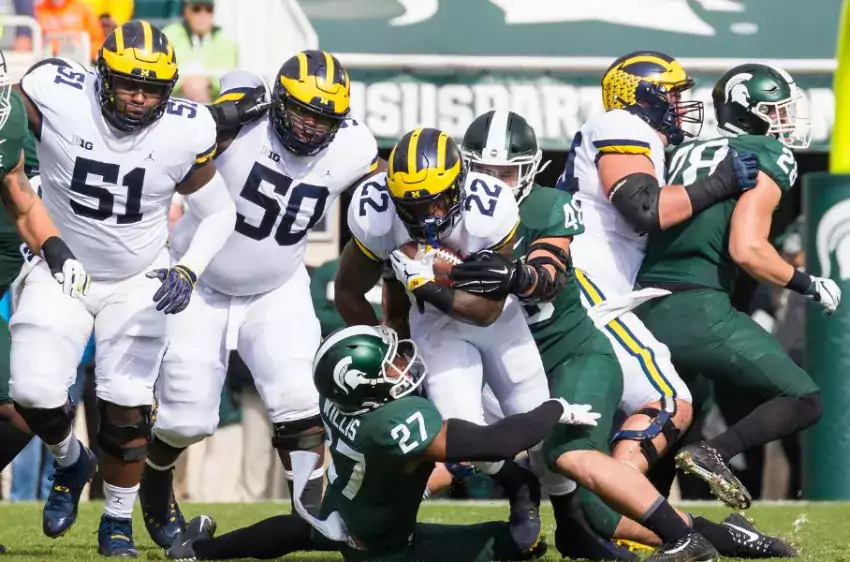
Neck Sharpies: Belly and the Well-Fed Spread

I challenge anyone to find a greater irony in football than the fact that the spread 'n shred offense was rejected at Michigan by Rich Rodriguez and restored under Jim Harbaugh. Rich Rod scrapped it in 2010 because Denard wasn't good at option reads. Hoke avoided it because he had other plans. Harbaugh is on everybody's short list of best coaches in the country for Hoke's plans.
But here we are, running not just zone reads and split zone as a check, but the checks to the checks. Last week I got into the arc keeper, a counter off split zone that can hit for big yardage. But Michigan was also making heavy use of "Belly", a Rodriguez favorite from 2008-'09 that looks like a zone read but is actually doubling the backside DT and planning for the cutback. And it did its job.
Let's break out our 10-year-old playbooks and see how it works.
The Standard Defense of Zone Read
Since this is really a counter to a base play it's best to first understand the base play: the Zone Read option. You're familiar with zone read, but probably more so with the option part. For this exercise you need to pay more attention to how it's blocked.
After the backside end is dealt with by the option, the play becomes, well, whatever off-tackle run play you want to use. You can run inside zone, outside zone, even Power-O or Down G with it. In the above example it's inside zone, and when running the zone read game out of a pistol formation this is by far the most common run play.
[After THE JUMP: gliding downhill]
Zone running rules are simple: 1) Get the linemen blocked, 2) Get your extra material to the linebackers. 3) Seal or run off the defenders to create running lanes. Let's go left to right with their thought processes versus this (base 4-3 over) front:
- Left tackle: Release to the WLB.
- Left guard: Get this NT blocked with help from my Center so we can get one of us to the LB level
- Center: Help the LG get this NT blocked so I can get to the LB level
- Right guard: Get this DT blocked with help from my RT if necessary so he can get to a linebacker
- Right tackle: Make sure my RG has this DT blocked so I can get to the LB and create a crease.
- Tight end (Y): Kick out this LB so there's a nice big lane to run out.
- Running Back: Find the gap that forms, starting with off-tackle then work back to a cutback lane.
Often in the course of running inside zone read, the quarterback has to take some time to make his read while the defense is reacting to the blocking. By the time the running back has the ball every defender is doing a fair job of closing every frontside gap and forcing a cutback towards that unblocked end:
Many a good inside zone read has died this particular death. The linebackers react too quickly for blockers to get down to them, and the linemen are intent on not letting your guys release, and your poor zone read run is now left to burrow into an unblocked LB's gap or cut back into the space between the unblocked end and the backside tackle.
But what if that was the plan all along?
Belly
Belly as we define it here* is a zone read play occasionally called "Double Dive" or "Read Dive" that attacks the cutback lane without ever having to cut back to it, giving the RB a direct shot at the backside while it's still pried open by the DE being optioned, and prying it open further by blowing the backside DT down. On a handoff all the back has to do is shoot straight ahead into the gap between the option and the ass-kicking.
For the first second after the snap, Belly moves like an inside zone read: The quarterback and running back get a mesh on, the tight end is kicking, the RT is threatening the next level, the RG is trying to get around the frontside DT, and the backside guard and tackle appear to be combo'ing the backside DT.
Except they're not getting off that NT. In fact they're moving him quite a bit. In fact there's starting to be a lot of space on that backside there. In fact: oh crap!
By the time that tackle realizes this double isn't some temporary nuisance en route to the second level but a planned thing to move him off the line of scrimmage, it's too late to do much about it. That's the whole point of a designed cutback: You want the defense to react to the direction inside zone attacks, so when the play cuts back they're caught on the wrong side of it.
* [As with many football terms this one gets used to mean different things. We got it from Rich Rod's WVU playbook, and that probably misappropriated a Wing-T play that's similar to Down-G.]
Belly in Action
Here's an pair of examples from the Wisconsin game. In fact they're the two plays directly after the 81-yard run I drew up last week. That too had a little belly action, i.e. they were doubling the backside DT.
The way I draw my play graphics makes it hard to tell how far the whole mass of bodies shifts. Note while you watch that the running back is going straight down the hashmark. It's not a cut; this play goes straight through the liver.
Play 1:
One thing to note from the above is the Pistol formation. If you have a super electric running back and run a lot of outside zone with your zone read (like Rich Rod) you can get away with a pure shotgun formation, but time is of the essence and the RB's downhill action from a pistol set can make all the difference when trying to run by the optioned guy.
Another thing is Wisconsin's in an odd (3-4 or 4-3 under) front, but the same rules apply: Wisconsin's "weakside end" is a defensive tackle in all but name. By adding a tight end to the backside the offense can still get that free release on the linebacker behind the guy they're doubling. Some teams also do it with a lead blocker.
Play 2:
An obvious question with any zone run is what do you do about a slant. If they slant away from the playside the last blocker has block the last unoptioned guy since you can't take his buddies off the double on the DT. This should bring a linebacker (or in this case a safety) around to be optioned.
This one caught a slant but the blockers are all on their toes and pick it up, even Gentry, who had the hardest job. It's hard to represent on the drawing but Wisconsin's line slanted so far that Higdon wound up barreling straight down the hash mark they started at and Bushell-Beatty planted the "SE" two yards inside of it.
The "ZONE" of the zone read also comes into play. According to Rodriguez this wasn't referring to the blocking but the area the QB reads for a defender to option. The difference between reading a player and whoever's in that zone becomes apparent when the defensive line slants. The SAM (#17 Van Ginkel) was the end man on the line of scrimmage when they lined up, but when it came time to read it was the strong safety holding the edge. That safety made the read hard, and Patterson countered by riding the mesh point almost all the way to a shared TD. By the time Higdon has the ball to himself the safety has shuffled down to meet him but there's no way a safety is stopping a Higdon.
I know we all bemoaned the lack of Bench Mason when Michigan got down to the 4 and 2 yard lines, but this play really gets the job done. The extra defender who has to commit to Patterson's legs can't be shooting in without a blocker, and the dive-ness of the backside handoff hits downhill and quickly like a good short gainer should.
The Harbaughification of Belly
I mentioned earlier you don't have to run this with a simple spread zone read look. In fact against Michigan State, the Wolverine offense added all sorts of blockers to the concept.
Here's a critical 4th and 2 early in the 4th quarter. It's a mark of how much Michigan trusts their belly game that this is their go-to short yardage play in such a situation.
Mason is indeed out there as the tailback (though back when the Flexbone was all the rage that guy was called the fullback). But this ain't no "We're diving the fullback—try to stop it" play. Okay, it is, but there's also a zone read, and now you really get to see what we mean when we say this spread 'n shred concept makes the defense play 11-on-11.
The play is blocked like it's meant to be a split zone duo. Duo is an inside zone play with extended doubles on both DTs. Split zone is that zone read counter where the guy who thinks he's being optioned suddenly discovers he's getting kicked with a fullback/TE/H-back coming opposite the flow of the play and the RB, who was always getting the ball, scoots through the resulting gap.
If it was Split Zone Duo, Michigan State has this solved:
The cornerback and strong safety on that side have to deal with Martin and Gentry in coverage so they're out. Michigan's doubling the DT (yellow), letting the DE (green) upfield to be kicked by McKeon, and bringing Mason on a dive. Sparty's plan is to hammer down the MLB (Joe Bachie) so Onwenu has to come off the double on the DT (Raequan Williams) who should be able to handle a single-block without giving up room. To cover the edge they will gap exchange: the DE (Willekes) is going to crash inside, thus putting his confrontation with McKeon right in the way of a dive. Willekes is replaced by the "Star" linebacker (Andrew Dowell).
I just named all four guys I starred on the MSU FFFF diagram. They're all selling out against a split zone, the exchange giving MSU equal numbers against a handoff while saving a safety. The result is a mass of bodies at the point of attack and a dead play because—if we're looking at split zone—the quarterback is just a guy delivering the ball then watching the play. Except he isn't. He's….
Ahem…
YO, CAMERAMAN! Pan down, man!
Hahahahahahahahahahahaahahah!
Lessons:
1. See the four star players of Michigan State's defense?
Point at them.
HAhahahahahahahahahhahahahahahahahahahahahaahaha!
2. Michigan State should have defended this better
Very true, and the guy to blame is Andrew Dowell, the optioned guy, who sold out 100% on the FB dive, leaving Patterson an easy read and a wide open edge. It's possible he thought Willekes, being outside of that crack block and all, should have been set up to contain and force a handoff. But no: when you crack/replace the guy who cracked is the guy inside and the replacement has the outside. Willekes shouldn't be expected to reverse his momentum into a guy, turn around and chase a quarterback with good legs who started facing the opposite direction. If Dowell set up outside and forced the give the blitzing linebackers created enough of a jam to have a shot at stopping even Ben Mason, and certainly not giving up more than two.
That's relevant to us because opponents are still playing the early season tendency—which in fairness to them resurfaced on that unbalanced arc zone read that Patterson wishes he had back. They also might believe pushing all their chips in against a full Ben Mason is the only way to win this play. Having an offense that forces the opponent to do unsound things that make them risk looking stupid is part of having a good offense.
3. This is a good play
Compared to other short yardage options, this one might be a little more susceptible to getting entirely blown up, but it's also likelier to have a high success rate because the quarterback cancels out a front seven defender. Even with the LB blitz, if Dowell plays this right it's Ben Mason going down hill behind Juwann Bushell-Beatty, who did in fact win his battle with Williams.
While any play can break big, operating so closely to an unblocked guy and leaving linebackers unaccounted for tends to lead to modest gains. Michigan isn't marching down the field with Belly. They can use it as a tough to stop 3rd/4th & 2 option, and bust it out some more when they're running their regular zone read option game to keep the defense from overplaying the frontside or overcommitting to defending split zone and arc zone.
4. It's zone—you can change gaps still
Often—especially when the defense shifts to an odd front—when running Belly the original running lane gets jammed up. Like Duo, while the play design calls for extended doubles, it can easily become an inside zone if the defense plays it irresponsibly. Cutback gaps can and do form.
5. Belly may be Rodriguezian but it's also very Harbaugh
Doubling a DT with Juwann Bushell-Beatty and Michael Onwenu. Straight downhill runs. Opportunities for all sorts of crazy blocking angles. I'm sure Bo would approve.
October 24th, 2018 at 4:14 PM ^
Da Comrades, the 11-on-11 revolution is being televised. Communist football is back—and here to stay!
October 24th, 2018 at 4:28 PM ^
This is really Community football - the team, the team, the team working together to get the job done.
It all starts with the line - good blocking makes it look like your play calling is good. And while good play calls can reduce the number of blocks you need to win (and make them easier), winning all the blocks can make nearly anything look good.
Warriner for Ground Emperor (on the Ground)!
October 24th, 2018 at 4:52 PM ^
I need it to be an -ism though.
October 24th, 2018 at 4:53 PM ^
Shea is tremendous at executing the ball fake.
It’s really frustrating though to see our WR just take a pass on blocking the safety. That play on the 1st clip could potentially go the distance.
October 24th, 2018 at 5:18 PM ^
Not really fair to the WR. Like the defense, the WR doesn't know where the ball is going. He's setting up to block the safety for the belly play. He could possibly close down the gap between himself in the safety more to block either way, but that's a block in a lot of space.
October 24th, 2018 at 6:16 PM ^
But wouldnt the WR's initial play be to engage the S look over his shoulder and either continue to push or release L or R depending on which side? He doesn't seem to do that.
the
October 24th, 2018 at 10:10 PM ^
Blocking while looking back at the play sounds really hard.
October 25th, 2018 at 9:06 AM ^
That WR is Martin, a RS freshman. He's turned upfield (never turn upfield). He'll learn.
October 25th, 2018 at 9:26 AM ^
It may change based on the situation. For a short yardage play sitting in the middle and making the safety take a long path to either side is more likely to get you the few yards you need while engaging early is a higher risk/reward situation.
October 24th, 2018 at 6:28 PM ^
Double
October 25th, 2018 at 9:04 AM ^
It’s not easy for sure. He is lost in space. It would be better to engage someone than nobody. He needs to read the body language of the dB. That looks like a block that could be made.
October 24th, 2018 at 7:17 PM ^
"Shea is tremendous at executing the ball fake."
Except that single occasion last week whereby he bungled the handoff to Higdon. Pretty sure that was mostly his fault. But mistakes happen. I just wish it wouldn't have happened on the road in East Lansing during BPONE DEFCON 2. However, the sample size is approaching a level at which we can safely say that he's becoming pretty damn good at executing it.
October 24th, 2018 at 7:23 PM ^
Wrong.
Shea did not mess up the handoff to Higdon. His eyes were supposed to be reading the defense, while Higdon goes for the ball, and the Shea decides whether to give it or pull it. Higdon slipped and knocked the ball out of Shea’s hands - it was mainly his fault, although you could also blame the slippery field conditions.
October 24th, 2018 at 11:12 PM ^
You're trippin' my dude, Higdon slipped and headbutted the ball out of the QB's hands. That was a mesh point and the RB's were supposed to be there, they didn't make it so you can't blame Patterson.
October 25th, 2018 at 5:34 AM ^
You sir, are one of the fans JUB was speaking of after the ND game.
October 24th, 2018 at 4:53 PM ^
Between the graphics and the writing - but mostly the writing - Seth, your pieces have become must reading for me. Congratulations, I be like dang on the improvements you've made and how polished your stuff has become - well done!
October 24th, 2018 at 4:58 PM ^
Dowell's Wylie Coyote turn and look after he realizes Mason doesn't have the ball is priceless.
October 24th, 2018 at 5:01 PM ^
I really like the next option on the Harbaughification-after Patterson keeps...Perry releases off his block and is wide open for a TD...as in WIDE OPEN.
October 25th, 2018 at 12:21 AM ^
Oh, wow. You're not kidding. And Shea can throw on the run …
October 24th, 2018 at 5:14 PM ^
Liking the offense a lot. Run game is good to great, QB run threat is awesome, even if it's limited, still a huge asset.
One area of complaint is the short passing game. I would like to see some more short passes and screens mixed in. Not a lot, but enough to pose a threat if miss-played by the D.
October 24th, 2018 at 5:15 PM ^
These are the kind of concepts that made Harbaugh's San Fran offense one of my favorites. It applies spread principles in the zone read game, but utilizes condensed formations to allow for the application of a wide variety of blocking schemes.
Where a true spread has strength in spacing, it has a bit of a weakness in sending blocks from a variety of directions. Here, with this condensed formation, Michigan can arc with two front side players to assist the Patterson keep run, while effectively still running the split belly play with the FB. But they can also run this same play in both direction. They also are in good position to run stretch, or wham, or Iso, or pin and pull, or Down G. They can block this in so many ways. And by mixing both these condensed formations with read football, you become increasingly difficult to stop.
October 24th, 2018 at 11:05 PM ^
deleted
October 24th, 2018 at 5:15 PM ^
My very novice question is about McKeon's role in the 4th and 2 play against State. If you focus on him for the whole play he sure looks like he's blocking ONLY for a Mason run, and looks surprised when he notices that Patterson has the ball late in the play, not Mason. If it is truly Patterson's choice, how is McKeon instructed to block for each possibility? It seems like if he had gotten more leverage on Willekes, he might have either blocked Willekes into Patterson as he started to pull away, or if Willekes happened to see that Patterson had kept the ball, McKeon's blocking would actually be pushing him towards Patterson, helping him make a tackle. It seems like the best coaching might be to tell McKeon to block and engage Willekes, but just barely, and try to stay out of the way of both potential ball carriers. It just seems like a very difficult assignment that could go wrong very easily. Can someone who knows more about this help me out here?
October 24th, 2018 at 5:26 PM ^
He isn't. McKeon only blocks the split belly zone here. Like the rest of the box players, their blocking assignments are all that of the belly play. Only the two receivers on the right side of the play are blocking for the keep (and actually only one of them is truly blocking for the keep, the other is blocking the safety but is aligning himself to block the belly play). Patterson makes it work because MSU crashes the DE to meet the split zone inside and there is room to the outside, but it's the read that allows him to make the play right.
Some teams may have the H read the DE crash and arc, but then you are requiring the H and the QB to be on the same page (i.e. it's expensive to install and takes lots of reps vs lots of looks, which given Harbaugh's offense and the variety it has, isn't worth the cost of implementation).
Maybe it's easier to conceptualize a standard zone read with outside zone. The entire OL is blocking outside zone for the RB, no one (potentially) is blocking any different if the QB keeps. It's the read that makes the QB right. That's also, to Seth's point, what can make these plays bust rather easily. If the QB makes the wrong read, there's no one really blocking for him and the play is pretty instantly dead.
October 24th, 2018 at 5:44 PM ^
Thank you! That helps.
October 24th, 2018 at 8:35 PM ^
Yes. I thought McKeon's block was interesting too. There is no doubt that he is surprised to see Patterson go past him with the ball-I chuckled when I saw his startled reaction. Actually though, McKeon's block worked well for both options-it was kind of a stalemate that shielded the defender from both options.
As I noted earlier, what I really like about the play is that it has a third option-of Patterson pulling up and passing. None of the O-line were downfield except Runyon I think may have been questionable. But OMG, the safety that Perry was blocking came flying up when he saw Patterson keeping-leaving Perry completely free for a TD if Patterson so chooses. In this scenario, being a 4th down, I am in complete agreement with taking the sure first down yardage.
October 24th, 2018 at 5:17 PM ^
Great read Seth! Neck sharpies #1
October 24th, 2018 at 5:19 PM ^
I'm by no means an expert, but I had no clue we scrapped the spread 'n' shred in 2010. I could have sworn it was the basis for our offense that year.
October 24th, 2018 at 5:30 PM ^
Denard rarely actually made reads in Rich Rod's offense. It was much more of what he called "QB Power" (actually just a zone play with a lead blocker) and Iso Draws, combined with true RB handoffs and maybe some window dressing. Denard didn't really read defenders often until Borges started doing it a bit early in 2011 (and I think they eventually found out what Rich Rod already knew, in that Denard struggled making the reads correctly).
But if you go back to early 2011, and watch the 2nd half of the ND game, there are some true zone reads which Denard made work because he was a great runner as much as anything. It took a while (probably too long, but every announcer also assumed Denard was doing a bunch of zone read when he wasn't) to just start running the gap equivalents to what Rich Rod was doing in 2010 (Michigan mostly ran Power O with Denard as the ball carrier once they went that way in 2011).
October 24th, 2018 at 7:05 PM ^
Thanks for the clarification! Much appreciated!
October 25th, 2018 at 9:35 AM ^
::Mind Blown::
I knew DRob was limited as a passer, though he was pretty good at the quick things that didn't require much thought as a thrower. But I would have never said he was poor at reading run options! I mean, how good would he have been had he been able to read the option and actually run all of Rich Rod's offense?
Holy hell... !!!
October 24th, 2018 at 5:19 PM ^
I think this is a bad play by Willekes. If you have an opposite side HB you’re on alert for a kick out block, if you get a run read from your OT, you’re coached to do 1 of 2 things. Wrong arm it, and get underneath to take the dive, or wall up the block and you absolutely have to keep your left arm free to keep outside leverage. He did neither, took the block in the face, and fell to his knees.
October 24th, 2018 at 5:29 PM ^
Watching this gif made me realize how close we were to not getting this. Shea was so anxious to pull and get running that he trips Mason and almost trips himself. I also previously thought Mason would’ve been short on a give, but now can see that if Shea just gives and doesn’t sprint after, he doesn’t trip Mason and he probably doesn’t fall short. Excellent playcall, one that unfortunately about 90% of the fan base would call dumb if Shea would have indeed tripped and fell. It’s incredibly frustrating watching the game at a party with people bitching “stop running it up the middle!”
October 24th, 2018 at 6:09 PM ^
Ahem, I was one of those people...
In my defense, I also yelled at the TV every time Shea neglected the open guy to his left and ran toward his right only to ignore the open guy downfield and take a sack
October 24th, 2018 at 10:47 PM ^
Every time Shea took a sack? What game were you watching?
October 24th, 2018 at 10:02 PM ^
I was also thinking about the trip as well, but I think mason falling down inadvertently ends up buying Shea more time. I think the defender probably had a harder time telling that he didn’t have the ball and therefore kept going instead of looking for the pull. I think if mason stays upright, that player in the gap may see that he doesn’t actually have the ball and adjust. Shea probably still gets the first down, but it’s more of a race.
October 25th, 2018 at 5:49 AM ^
People bitching about specific plays being called at specific times of the game have absolutely no clue what principles the team is operating under. They have no clue what the constraints are. They have no clue. Without a playsheet in your hand you can not complain about specific play calls because there is no way you can possibly know what the offense is trying to do. Sometimes the other team just wins the battles. Or they RPS you.
October 25th, 2018 at 8:14 AM ^
Totally agree. And I'll take it even one step further - people bitching about "specific plays" when they don't even know what the freakin' play is. In order for a person to bitch about the play call it should be required that they actually know what play was called. And no, "run-it-up-the-middle" is not an actual play.
October 24th, 2018 at 5:31 PM ^
THIS is what happens when you have multiple elite coaching minds putting together a plan. Not just a game plan, but a season plan.
I can only imagine what this will look like when fully weaponized in 2-3 years. "Fully weaponized" is a stable coaching cadre and the majority of the players having been in the stable environment for their entire tenure with the team.
I don't know that we truly appreciate the achievement so far this year with a QB in year 1 and an O-line in year 2. In many ways, this was a rebuild. I can't wait to see the result when we are reloading, not rebuilding.
October 24th, 2018 at 5:34 PM ^
Seth this is amazing I just have two minor quibbles: (1) The description of "Belly vs Even Front" doesn't match the graphic - shouldn't it be RT/RG are doubling the DT, and C/LG doubling the NT, and LT releasing? I could be wrong (credit to you guys, everything I know about football I learned on this here blog) but I that's not making sense to me as written.
(2) Why are the Michigan plays presented upside-down, with offense on top of the LOS? It threw me for a loop when skimming through the pictures at first.
Lastly, and this is me being very greedy, but do you have any examples of similar plays against the Michigan D? Interested to compare and contrast the MSU approach with Don Brown's response. Thanks!
October 24th, 2018 at 7:35 PM ^
1. Not following. This play attacks the backside. If they're reading the backside DE they're doubling the backside DT (the nose). The frontside (RG, RT, TE) is window dressing.
2. Just how I learned it. When I make those scheme-only diagrams for offense I will flip it to put the O on the bottom, but when I draw up a real event I keep the O on top always.
October 25th, 2018 at 11:14 AM ^
For the first second after the snap, Belly moves like an inside zone read: The quarterback and running back get a mesh on, the tight end is kicking, the RT is threatening the next level, the RG is trying to get around the frontside DT, and the backside guard and tackle appear to be combo'ing the backside DT.
Correct me if I'm wrong, but the center is unaccounted for in that paragraph. In the diagram I see, its the C/LG combo'ing the backside DT and the LT going to the second level. Also, I think I you edited the post while I was posting, since I distinctly remember the original post saying "the RT is kicking ass" instead of threatening the next level in the paragraph.
October 25th, 2018 at 2:56 PM ^
Ah, meant backside G and C. Typo.
I think you might have been one of the few people who read a draft version that appeared for several minutes yesterday because we had a cache issue on the site that set every single article back to the version that was uploaded first. In a much earlier draft I drew it up with the defense in an under formation and that paragraph Was edited
October 24th, 2018 at 5:50 PM ^
Challenge accepted!
The greatest irony in football: helmet designs enable dangerous play, resulting in more head-injuries.
October 24th, 2018 at 8:47 PM ^
"helmet designs enable dangerous play, resulting in more head-injuries."
The quickest way to stop targeting, spearing, leading with the head, etc is to get rid of the elaborate cages, masks, and visors that festoon modern helmets and return to what Tom Harmon wore: a helmet with no bar.
You lead with your head wearing that thing and you're going to pay a bigger price than the guy you hit.
October 24th, 2018 at 9:43 PM ^
i think if you get rid of all the hard plastic it will make the game much safer. maybe go to one of the padded helmets i've seen recruits wear when they do 7 on 7 or something like a boxing helmet.
October 25th, 2018 at 10:28 AM ^
Those "padded" helmets you are referring to are useless for the purpose you suggest. They are rugby scrum caps which provide little to no impact protection. They can stop some blood incidents that occur during the course of rugby play, but largely have the effect of protecting the ears or replacing the taping of the ears.
The use of them in 7 v 7 (and rugby) is purely optics.
That said, the tacking in rugby is much safer because of the lack of helmets (assuming proper technique is followed) and because of the nature of the contact. Rugby tacking happens at much closer quarter and at "safer" angles, rugby law includes the requirement to wrap the ball carrier, making helmet-less play reasonably more safe. (I have had to stop playing because of concussions - though those concussions occurred in hockey and not rugby (only one concussion from rugby in my 20 years of playing) before the "Messier project" helmets and next generation helmets which have allowed me to continue playing hockey without any concussions since).
That said,there are still, as would be expected, a not insignificant occurrence of concussions but using rugby tackling principals (which require the wrapping of the arms to be a lawful tackle) can make for a safer tacking experience and also for just pure better results that is somewhat transferable to American football.
October 24th, 2018 at 6:08 PM ^
Here is to hoping this is a next level plan of counters/passes built off this.... that we can keep contained until OSU and we can press firmly on the “Unleash Hell” button on their defense.
October 24th, 2018 at 6:08 PM ^
On the straight Belly vs Wisky where Higdon scored with Shea effectively still holding the ball, does anyone else get the impression that Karan intended to run into the back of the line expecting a push, but Shea led him rightward and into the hole? It did seem that way to me at the time and the more I watch that clip the clearer it becomes. That score was all on Patterson.
October 24th, 2018 at 8:13 PM ^
I thought that as well.
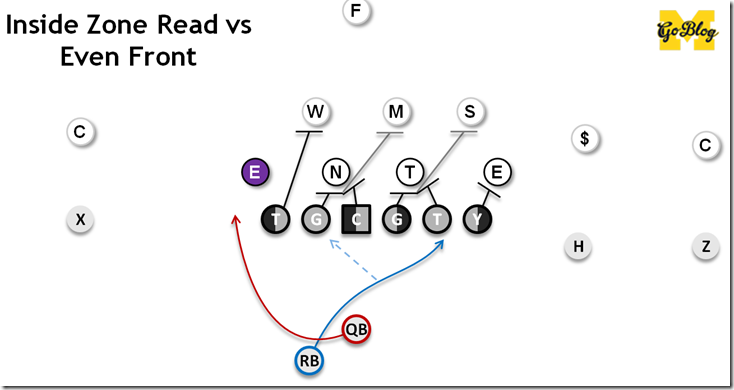
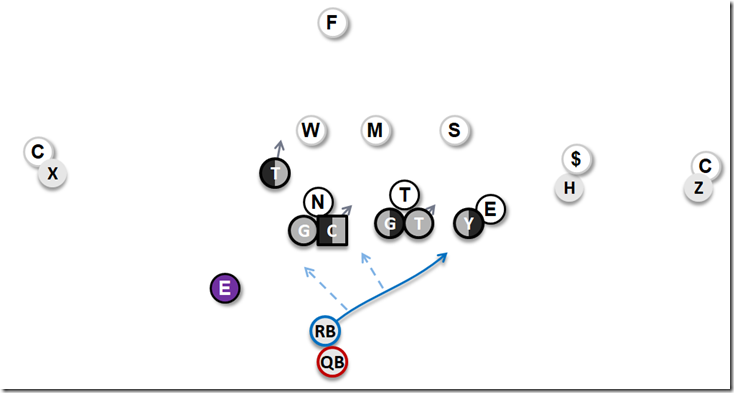
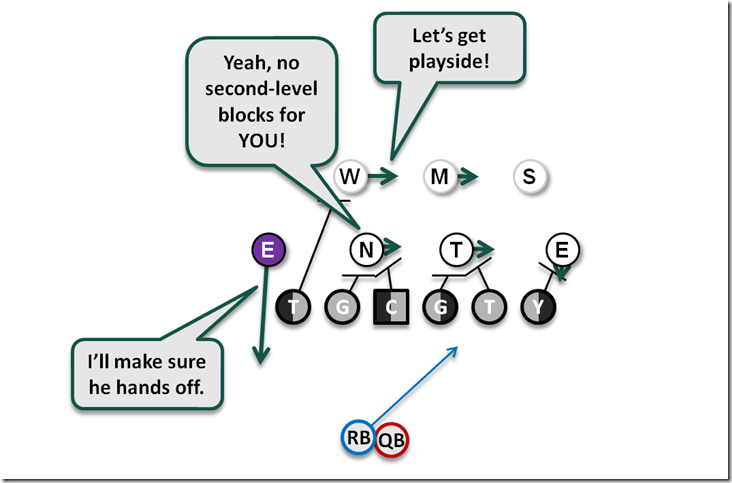

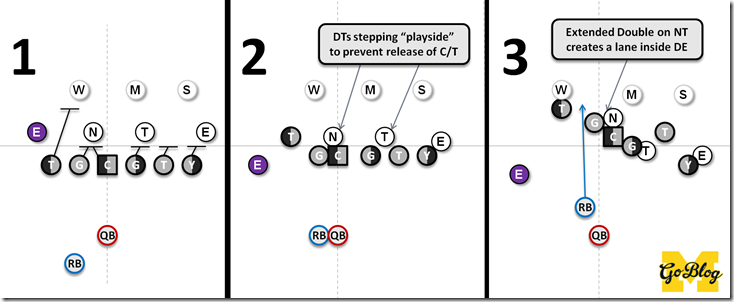
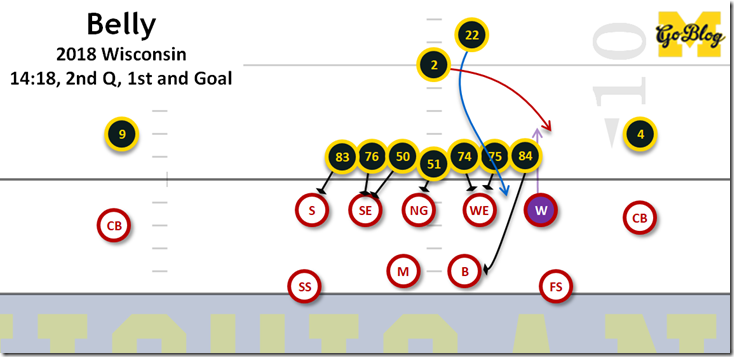
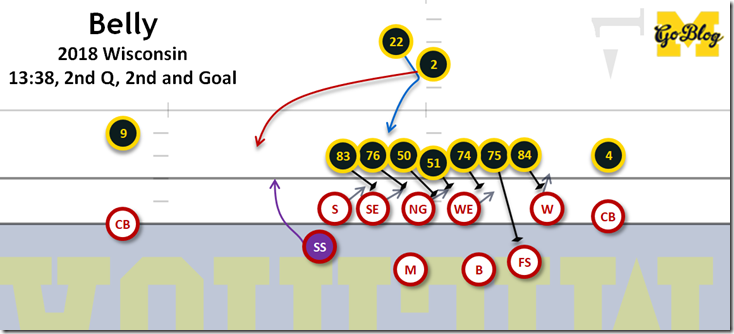
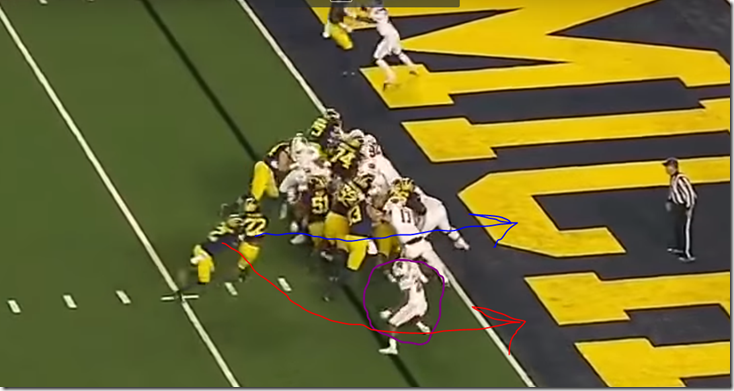

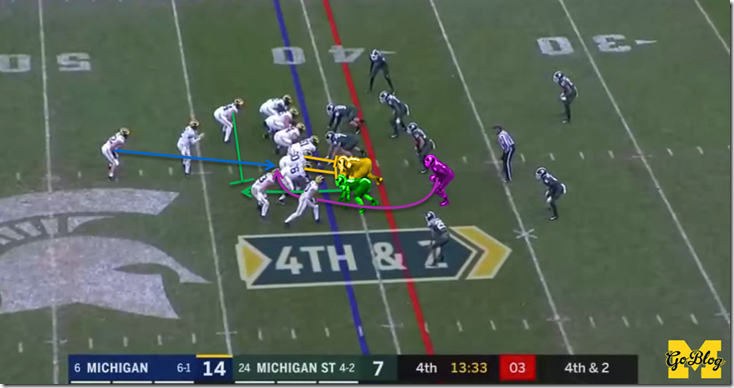

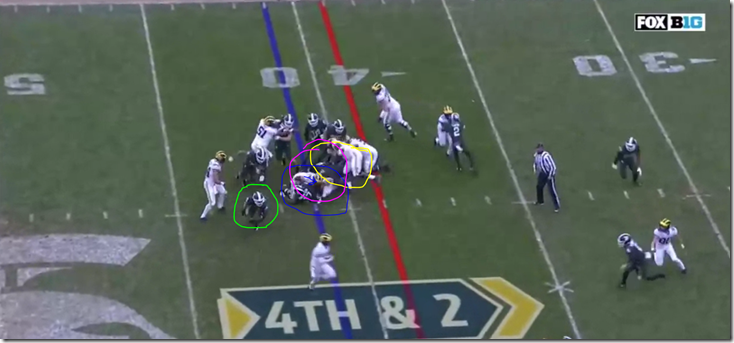
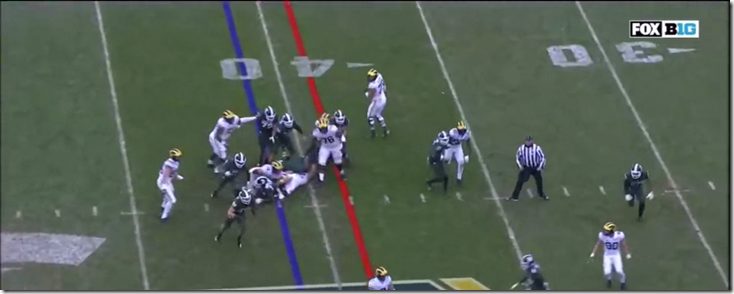
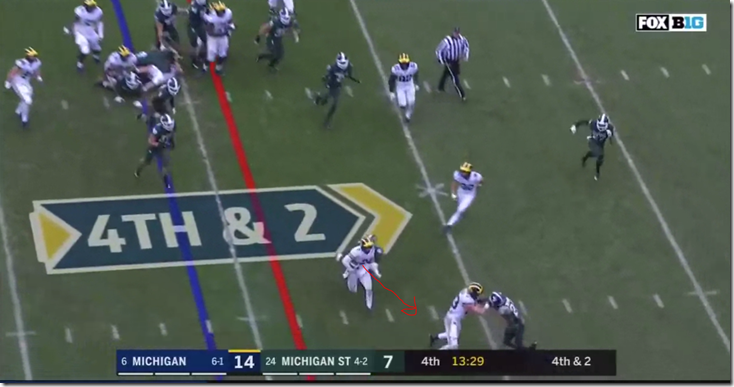

Comments